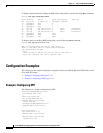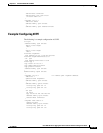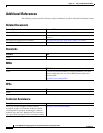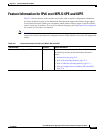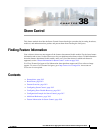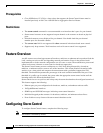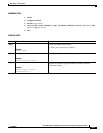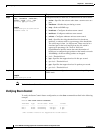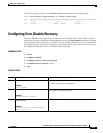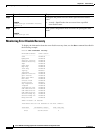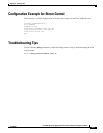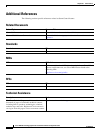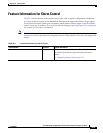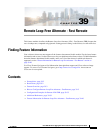
38-4
Cisco ASR 901 Series Aggregation Services Router Software Configuration Guide
OL-23826-09
Chapter 38 Storm Control
Configuring Storm Control
Note To disable Storm Control feature, use the no storm-control command.
Verifying Storm Control
To verify the Storm Control feature configuration, use the show command described in the following
example.
Router# show storm-control broadcast
Interface Type Filter State Level Current
--------- ------ ------------- ----------- ----------
Gi0/1 Bcast Forwarding 200 pps 0 pps
Gi0/1 Mcast Forwarding 300 pps 0 pps
! The “current” field is not supported for storm control.
Step 4
storm-control {action {shutdown |
trap}| {broadcast | multicast |
unicast} {level {
level
| bps
bps-level
| pps
pps-level
}}
Example:
Router(config-if)# storm-control
broadcast level 70
Configures broadcast, multicast, or unknown unicast storm control.
• action—Specifies the action to take when a storm occurs on a
port.
• shutdown—Disables the port during a storm.
• trap—Sends an SNMP trap.
• broadcast—Configures broadcast storm control.
• multicast—Configures multicast storm control.
• unicast—Configures unknown unicast storm control.
• level—Specifies the rising threshold level for broadcast,
multicast, or unicast traffic as a percentage of the bandwidth.
The valid range is from 1 to 100 percent. There can also be a
fractional part in the level ranging from 0 to 99, which is
expressed in percentage. So a level of 49.99 on a
GigabitEthernet interface means that once the number of
broadcast (or configured type) packets on the interface exceeds
499.90Mbps, all the exceeding packets are dropped.
• level—Threshold level.
• bps—Specifies the suppression level in bits per second.
• bps-level—Threshold level.
• pps—Specifies the suppression level in packets per second.
• pps-level—Threshold level.
Step 5
end
Example:
Router(config-if)# end
Exits the interface configuration mode and enters the privileged
EXEC mode.
Command Purpose



